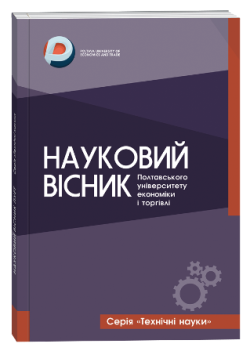EVALUATION OF THE QUALITY OF FOOD PRODUCTS BY PETRIFILM METHODS
Abstract
Product quality depends on raw materials, production conditions, storage conditions (packaging, air temperature, lighting), personnel hygiene, transportation conditions, etc. It is important to comply with the requirements and rules of production control regarding the use of modern methods that make it possible to detect microbiological risks in advance and prevent contamination of food products with microorganisms. Modern means of detecting indicator microorganisms in the production of food products make it possible to organize sanitary measures in a timely manner and thereby ensure the quality of food products according to microbiological indicators. During monitoring, Petrifilm is used, which optimizes microbiological studies of food products; In particular, the use of Petrifilm allows to reduce the time and resources spent on microbiological research. An analysis of the main modern food environments used for transportation, cultivation, isolation, identification and separation of food microorganisms was carried out. The analysis of meat food products was carried out using test tablets designed for the quantitative detection of various groups of microorganisms. Convincing analysis and assessment of the quality and stability of Petrifilm properties undoubtedly ensure the reliability and validity of the results of microbiological studies of meat food products and production surfaces.
References
2. Castro, M., Soares, K., Ribeiro, C., & Esteves, A. (2024). Evaluation of the Effects of Food Safety Training on the Microbiological Load Present in Equipment, Surfaces, Utensils, and Food Manipulator’s Hands in Restaurants. Microorganisms 12, no. 4, 825. https://doi.org/10.3390/microorganisms12040825
3. Hartantyo SHP, Selvaraj R, Ho J, Oh JQ, Er JC, Li A, Aung KT. (2023).Food Safety Controls during Bulk Food Preparation–An Observational Analysis. Foods. 12(12), 2376. https://doi.org/10.3390/foods12122376
4. Jasson, V., Jacxsens, L., Luning, P., Rajkovic, A., & Uyttendaele, M. (2010). Alternative microbial methods: An overview and selection criteria. Food microbiology, 27(6), 710–730. https://doi.org/10.1016/j.fm.2010.04.008
5. Joosten, H., Marugg, J., Stephan, R., Klijn, A., Jackson, T., & Iversen, C. (2008). A rapid and reliable alternative to ISO 21528-1:2004 for detection of Enterobacteriaceae. International journal of food microbiology, 125(3), 344–346. https://doi.org/10.1016/j.ijfoodmicro.2008.04.003
6. Mainardi, P. H., & Bidoia, E. D. (2024). Food safety management: preventive strategies and control of pathogenic microorganisms in food. European Journal of Biological Research, 14(1), 13–32. https://doi.org/10.5281/zenodo.10724672
7. Shintani, H. (2014). Methods of rapid microbiological assay and their application to pharmaceutical and medical device fabrication. Biochem Physiol. 3(4), 1–7.
8. Harkavenko, T.O. (2012). Porivnialna kharakterystyka khromohennykh seredovyshch odnoetapnoho vydilennia ta priamoi identyfikatsii Bakterii hrupy kyshkovoi palychky [Comparative characteristics of chromogenic media for one-step isolation and direct identification of Escherichia coli bacteria]. Veterynarna medytsyna Ukrainy.1 (191), 31–33 [in Ukranian].
9. Kuzmynskyi S.M. (2006). Problemni pytannia mikrobiolohichnoho kontroliu kharchovykh produktiv [Problematic issues of microbiological control of food products]. Problemy kharchuvannia. Retrieved from http://www.medved.kiev.ua/arh_nutr/art_2006/n06_1_6.htm [in Ukranian].
10. Panasiuk, I., Danylenko, S., Potemska, O., & Zakrevska, V. (2016). Analiz mikrobiolohichnykh metodiv doslidzhennia mikrobioty miasa [Analysis of microbiological methods for studying the microbiota of meat]. Prodovolchi resursy. 4 (06), 131–139 [in Ukranian].
11. Saveleva, E.E., Bulhakova, N.A., Lapkyna, E.Z., Barankyna,T.A., & Sukmanov, V.A. (2020). Antymikrobna aktyvnist vodnykh vytiazhok roslyn rodu potentilla L [Antimicrobial activity of aqueous extracts of plants of the genus Potentilla L]. Medyko-farmatsevtycheskyi zhurnal «Puls», 22 (6), 99–105 [in Ukranian].
12. Flaumenbaum, B. L., Bezusov, A. T., Storozhuk, V. M., & Khomych, H. P. (2006). Fizyko-khimichni i biolohichni osnovy konservnoho vyrobnytstva [Physical, chemical and biological bases of canning production] [in Ukranian].


